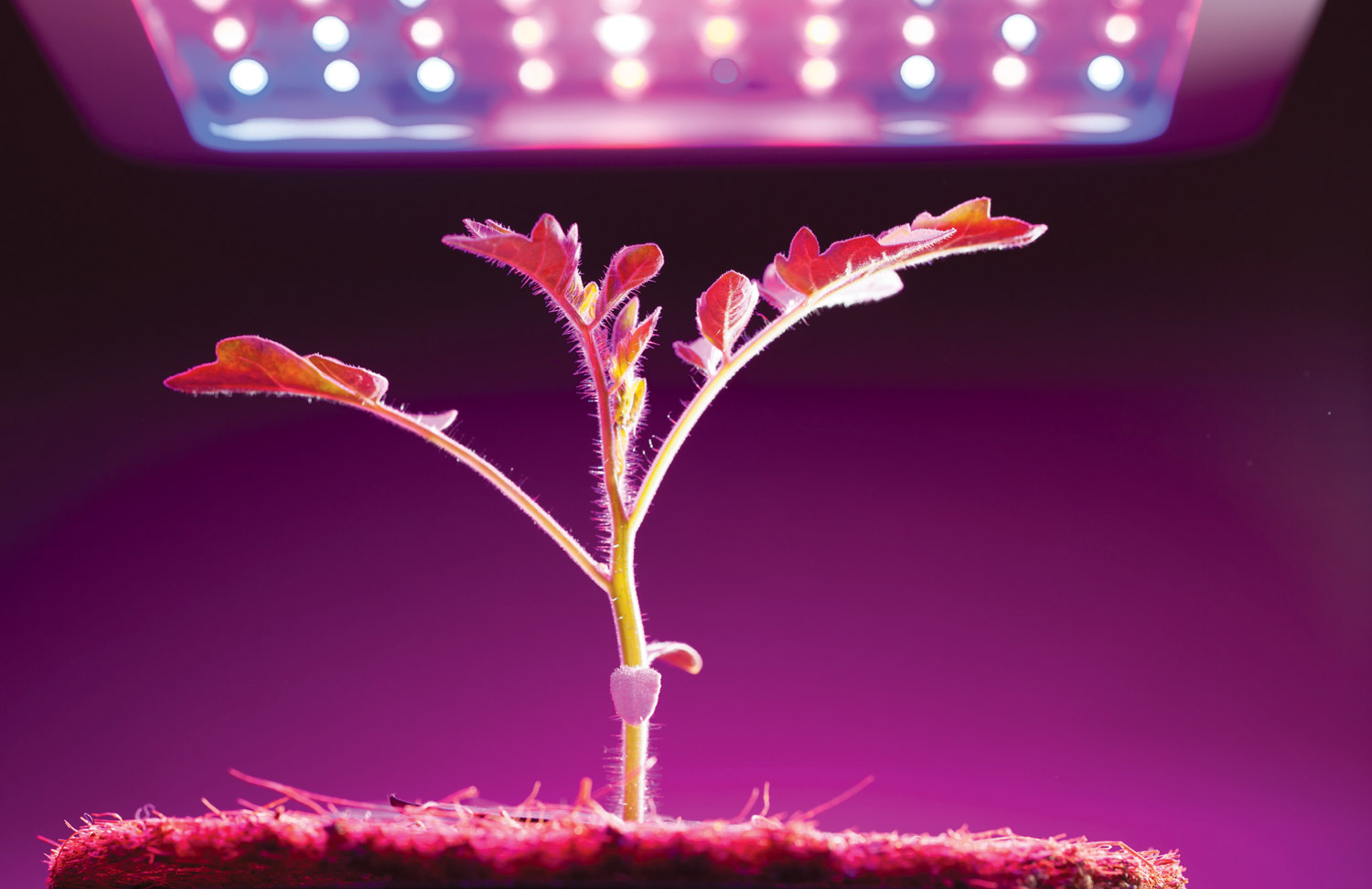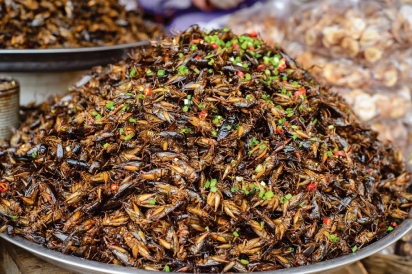Cultivating Change is the Mother of Invention
THESE AGRICULTURAL INNOVATORS ARE WORKING TO SOLVE GLOBAL FOOD ISSUES
According to some estimates, by 2050 there will be nine billion people vying for the Earth’s assets. Factor in climate change and the depletion of natural and agricultural resources and it’s clear that alternatives to traditional models of farming—both small-scale and industrial—are critical to our survival. The following companies are on the forefront of sustainable, alternative food production, utilizing everything from repurposed shipping containers to insects to ensure humans have a nutritious, flavorforward, viable future. —LM
CROP CULTIVATION FOR A CHANGING PLANET
PlantLab was founded in 2010 by four Dutch entrepreneurs with backgrounds in plant science or engineering. Their research started in open-field horticulture with the goal of creating a more resourceful, cost-effective means of cultivating and increasing yields while shortening growth cycles. Over time, their expertise moved indoors to greenhouse growing of various crops. They observed that if all necessary inputs were fully controlled, a plant would yield its maximum potential, which inspired them to move on to a new generation of growing with the potential to help produce food in climatically challenging, famine-stricken or urban areas. To accomplish this, the PlantLab partners acquired a 200,000-squarefoot facility that has now become its global headquarters, as well as a research and production facility in Hertogenbosch, Netherlands. Here, PlantLab improves upon its methods of plant production and scientists invest in new technologies to stay on the leading edge of optimal plant development.
The patented system includes a controlled environment that integrates technology, mathematical modeling and plant physiology with multi-layered vertical growing. In these units, the PlantLab team analyzes the variables within each type of plant to discover the “plant ID,” after which the team develops growing “recipes” that can adapt the plant for taste, aroma, medicinal compounds and speed of growth and vigor.
Because of the way the growing environment can be controlled, PlantLab requires a fraction of the land required by conventional farming, and there is virtually no water waste, unlike greenhouse growing. The need for pesticides is also eliminated, ensuring a supplementary food supply that is safe and secure for consumers, as well as the planet. —AWB
HYDROPONIC FARMING 2.0
With a combination of innovative thinking, advanced technology, progressive agricultural practices and repurposed shipping containers, farmers such as Kate Haverkampf of Tassinong Farms in Crested Butte are removing many traditional roadblocks to year-round food production. Haverkampf began her “freight farming” operation in 2015, using four shipping containers on her own land to supply her community with vertically farmed lettuces, herbs, flowers and root vegetables such as carrots and radishes, ever since. Merging hydroponics with complex systems technology, these portable farms, entirely encapsulated in shipping containers, make agriculture feasible everywhere from office-building rooftops to mountain towns, worldwide. Find out more at FreightFarms.com. —MG
EAT LOCALLY, SAVE LIVES GLOBALLY
A packet of therapeutic peanut-butter-based medicine that has the potential to cure acute severe malnutrition—the leading cause of death in children worldwide—in developing nations? It’s no joke, and it’s called Mana—a Ready-To-Use Therapeutic Food (RUTF) made with peanut butter, milk and multivitamins. Studies show that 96 percent of children treated with RUTF are cured of malnourishment. At Boulder-based Good Spread, their RUTF production and distribution partner Mana (they work with various aid organizations) is supported in part by retail sales of their delicious nut butters, which come in flavors like Honey, Natural Peanut Butter and Organic Honey Banana Peanut Butter. Good Spread also values supply-chain transparency, sustainability and cost-effectiveness in their products. Bonus: When you use Good Spread’s impact-tracking app, you can see how your purchase saves lives in countries like Nicaragua, Chad, South Sudan and Uganda. —MG
BUGGING OUT
Despite the Western aversion to entomophagy (the human consumption of insects and arachnids), it’s believed that up to 80 percent of the world's cultures eat bugs as a dietary staple. High in protein, calcium and other essential nutrients, insects—from crickets and cockroaches to various species of grubs (immature insect larvae)—are often considered delicacies (consider chapulines, the toasted grasshoppers beloved in Mexico, or witchetty grubs, a coveted snack of Aboriginal peoples in Central Australia).
Edible insect farming—known as microranching—is a growing enterprise in the United States, as diminishing agricultural land and an exploding global population create a need for nutrient-dense, low-overhead, environmentally friendly alternative protein sources. By way of example, former UN consultant Wendy Lu McGill of Denver’s Rocky Mountain Micro Ranch, raises crickets and several species of grubs in a repurposed shipping container, and sells them to wholesalers, retailers and restaurants (look for her crickets at Denver’s Linger, and Comida, and in Pappardelle’s Pasta dried tagliatelle). Edible bugs are now found nationwide in everything from cricket flour energy bars and snack foods (tortilla chips, cookies and other baked goods and confections) to fine-dining venues. Surprise! They’re not only palatable, but often delicious.
Getting Americans to stomach entomophagy, even as a concept, is a slow process, but thanks to the support of chefs, micro-ranchers, entomologists and other scientists, it’s gaining acceptance via edible insect dinners, cooking classes, seminars and conferences. Want to experiment on your own? EntoMarket is an excellent online resource for insect flour and prepared foods, EdibleInsects.com. —LM







